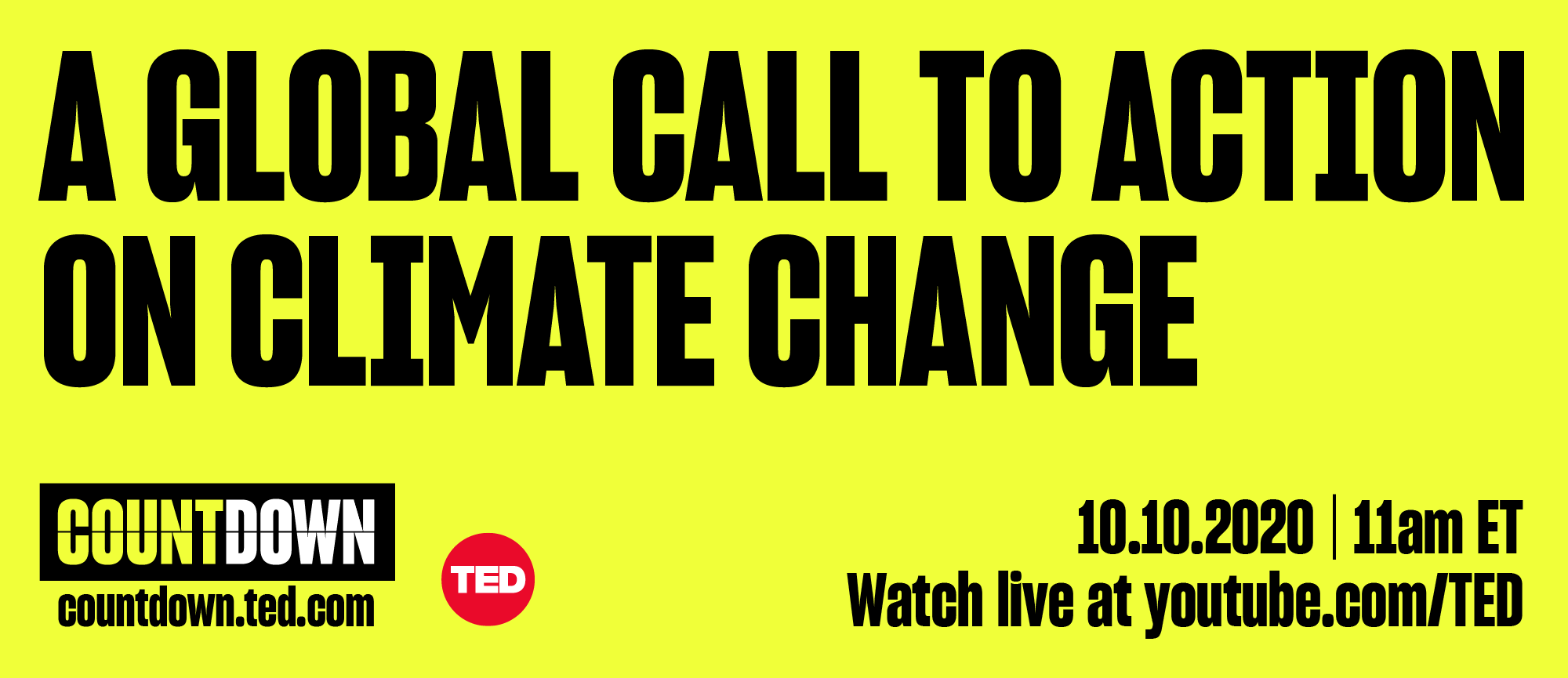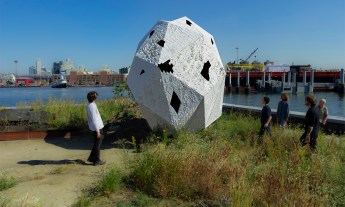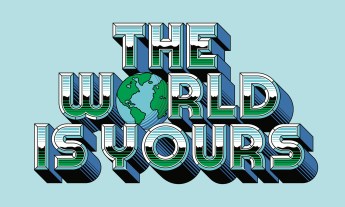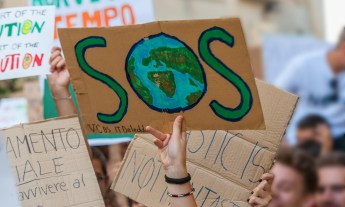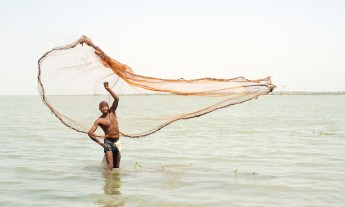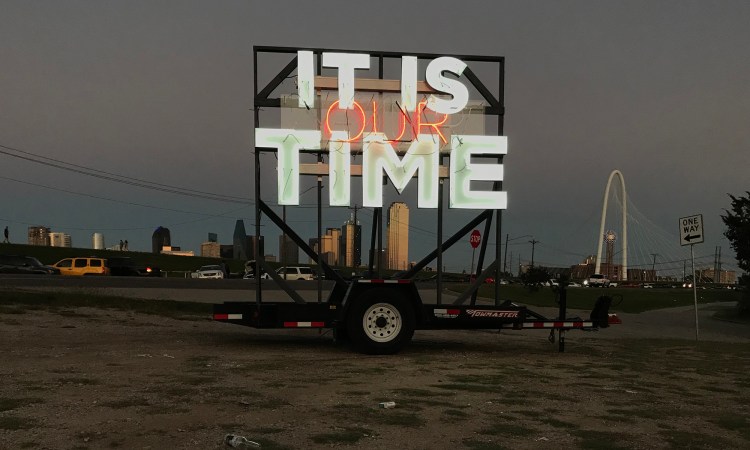
These works are part of a larger global art initiative that spans 10 cities on 3 continents, all launching on 10.10.2020 as part of Countdown. Go here on 10.10 to see all of the works revealed.
Our climate is in a state of crisis.
But at a time when attention is being pulled in every direction by phone alerts, social media posts, emails and news headlines, is there a way to reach people on this subject on a different, perhaps deeper, level?
Meet six TED Fellows who are using art to inspire climate action.
On 10.10.2020, created in collaboration with the nonprofit organization Fine Acts for the Countdown global launch event, these individuals will be unveiling public art pieces across the globe that will be on display for roughly 24 hours. Yes, it’s not long — but so is the amount of time left for us to take decisive action on the climate and avoid the most catastrophic consequences.
Their work is a potent reminder that climate change touches every corner of the globe — and the solutions will require all of us.
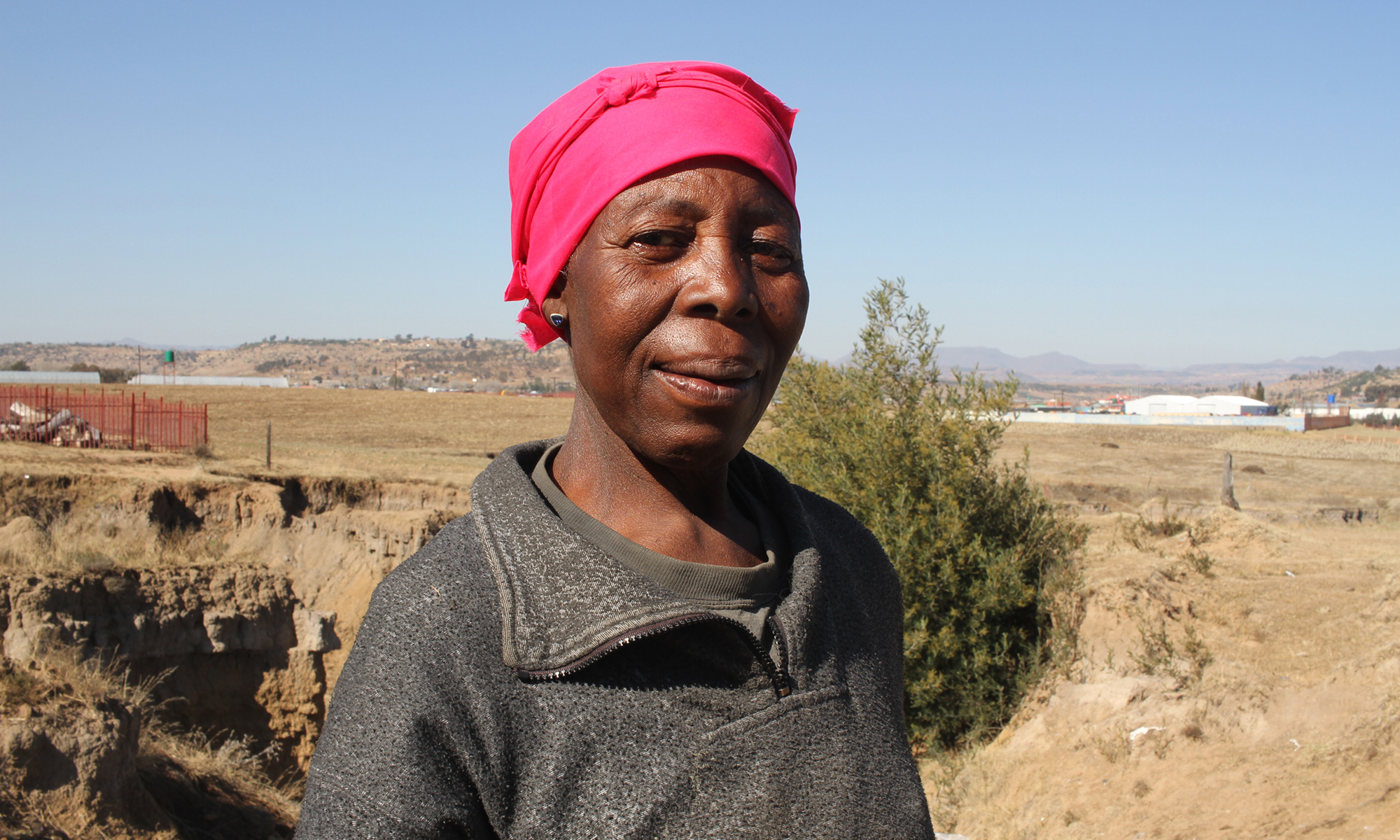
Living in South Africa, poet and artist Lee Mokobe has experienced firsthand the impact of climate change on our daily lives. In 2018 — after three consecutive years of record drought — Cape Town found itself anxiously counting down to Day Zero, the day that the city would run out of water.
Fortunately, the city was able to avert going completely dry through collective action, including massive campaigns to limit toilet flushes and showers and recycling washing machine water. Still, water continues to be a scarce resource in South Africa and across the African continent as a whole.
For Countdown, Mokobe created an audiovisual installation fusing poetry, music, and film which will be shown at Kasi RC art school and theater. His piece highlights local climate change heroеs on the front lines (including the woman shown above) — from the recyclers who sort through dumping sites to indigenous healers who educate communities about water and land conservation. “My main aim is to show that ordinary citizens can become part of the solution to help slow down climate change through reducing greenhouse gas emissions and conserving nature,” he says.
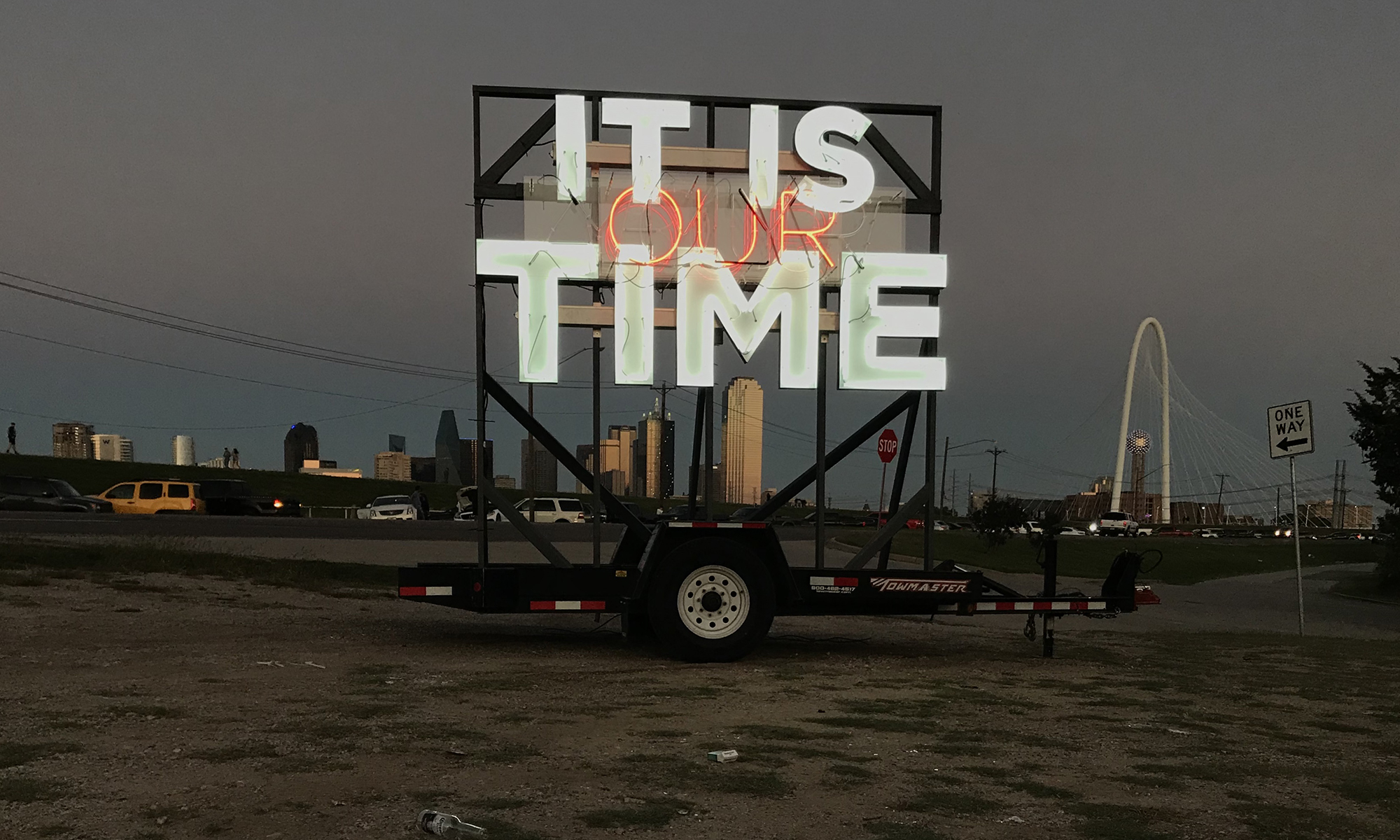
“If you were told you only had six months left to live, you would probably change your life or behavior in order to make the most of that time,” says interdisciplinary artist Alicia Eggert, who is based in Denton, Texas. In that spirit, she and David Moinina Sengeh, the Chief Innovation Officer for the country of Sierra Leone, wanted to create an artwork that communicates both a sense of urgency and shared ownership.
“To imagine or be reminded that our days are numbered can help us focus on what truly matters and encourage us to break patterns of procrastination and inaction,” Eggert says. So the pair designed a flashing neon sign that says, “IT IS TIME” — and it alternates between the phrases “IT IS MY TIME,” “IT IS YOUR TIME,” “IT IS OUR TIME,” and “IT IS ABOUT TIME.”
On 10.10, this sign will be placed on a moving truck and on display throughout Dallas, Texas. A permanent version of this sign will later be installed in Freetown, Sierra Leone.
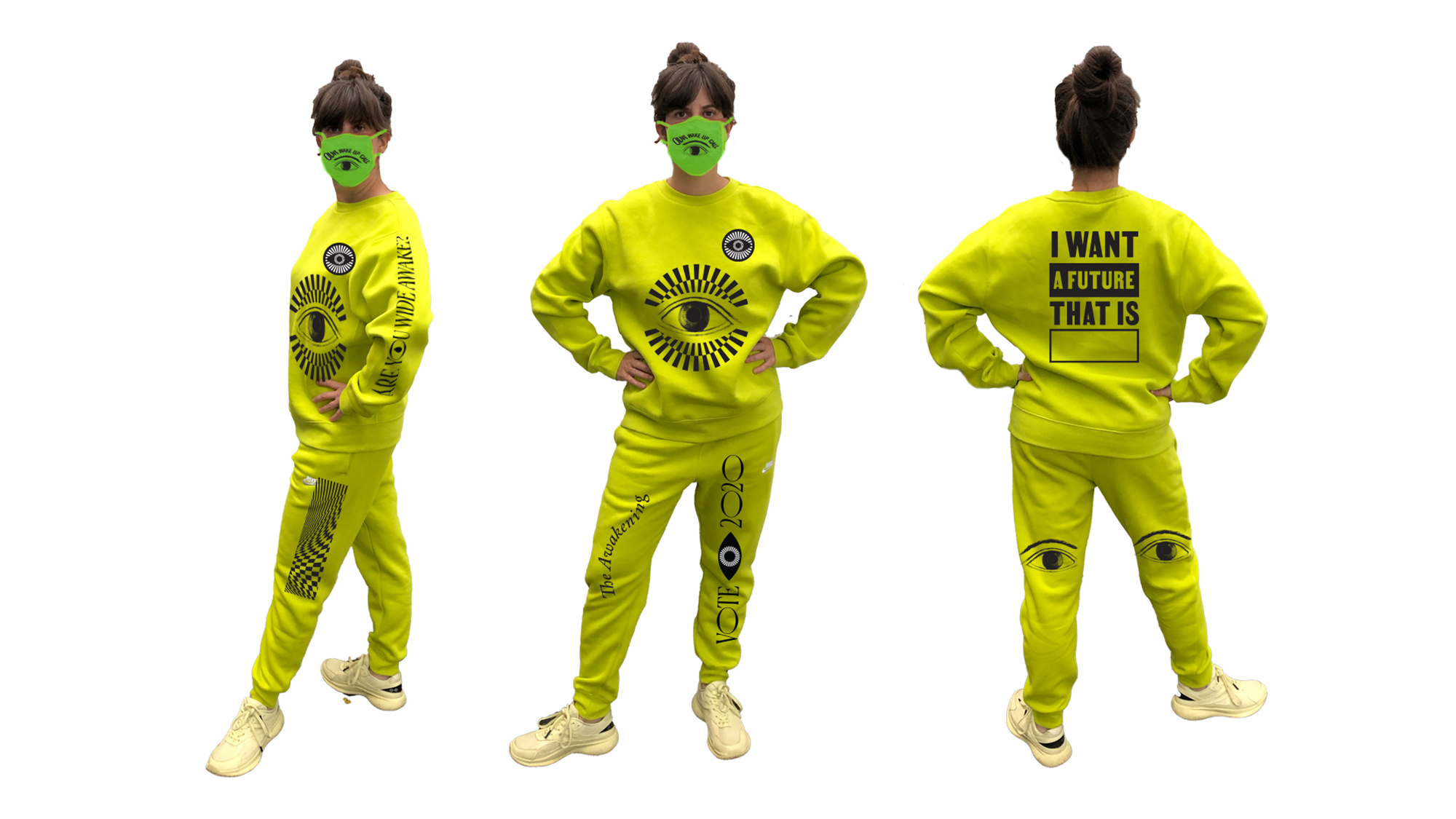
The residents of Rhode Island were major players during the transatlantic slave trade — the state housed more enslaved people per capita than any other in New England. Against the backdrop of the historic sites in the capital city of Providence, artist Sarah Sandman — along with Rhode Island Institute of Design professor Jessica Brown — are striving to call attention to the connection between racism and climate change.
Dressed in custom-designed climate justice tracksuits (shown above), the pair will lead a musical procession through the city accompanied by the all-womxn Clam Jam Brass Band. “‘Our Wake Up Call’ highlights the environmental injustices, including climate change, that have a disproportionate effect on communities of color and low-income communities in the US and around the world,” Sandman says.
The walk’s route itself sends the message that voting can serve as a pathway to social progress. It begins at Esek Hopkins House, the home of a former slave ship commander, and ends at a mural by local artists that spells “VOTE.”
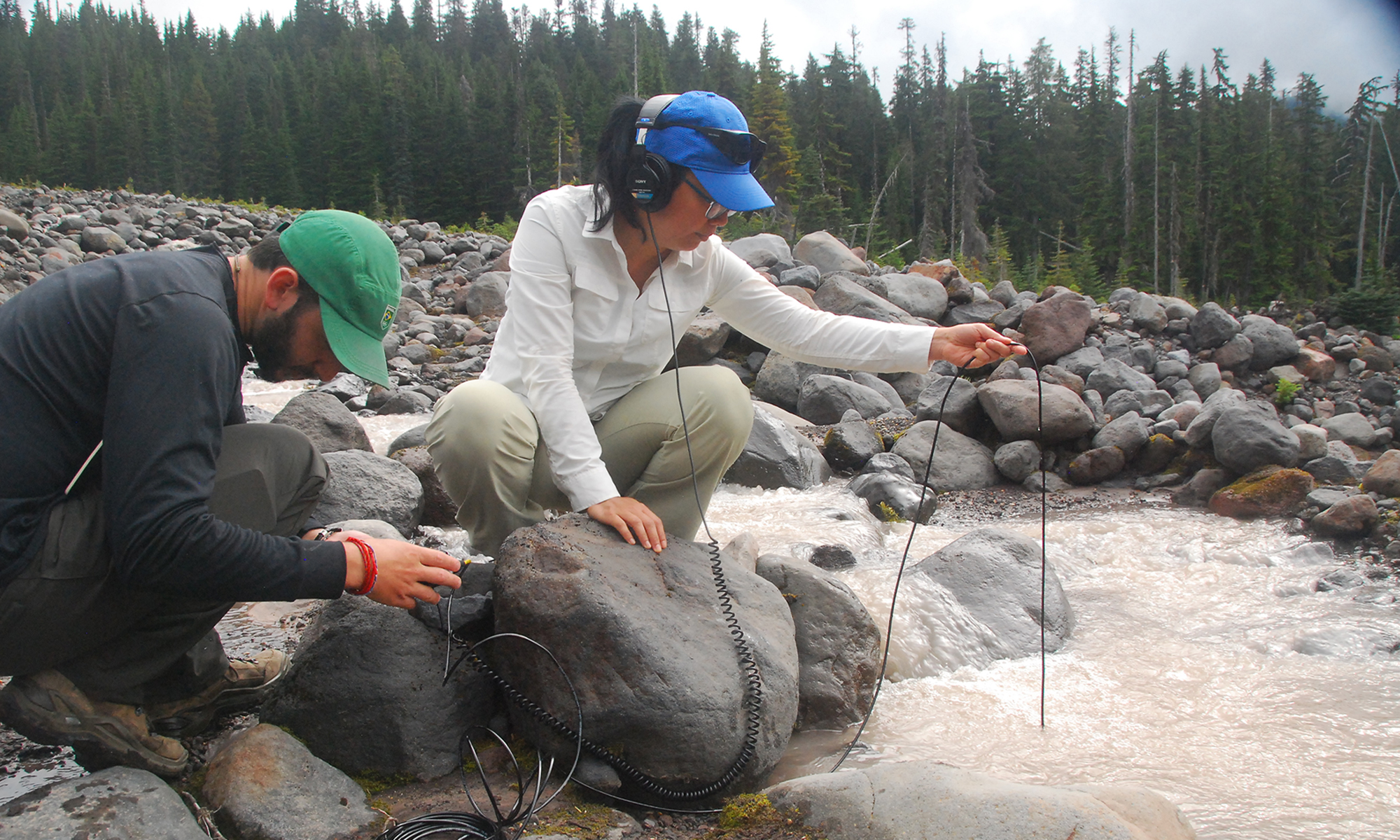
On our planet, 99 percent of freshwater comes from glaciers and ice sheets — but these life-sustaining resources are rapidly disappearing. NYC sound artist Susie Ibarra and Vancouver-based climate scientist Michele Koppes traveled from the Indian Himalayas to the Pacific Northwest Coast Mountains to the Greenland Ice Sheet to record the sounds of glacier meltwater across the globe.
On 10.10, two “sonic waterfall” installations will bring some of these sounds to Jack Poole Plaza in Vancouver and Innisfree Garden in Millbrook, New York, where visitors can listen to the rhythms of glaciers while simultaneously viewing photos of the disappearing landscapes.
“In recording the sounds of glacial meltwater flowing from the mountains to the sea, we discovered that these sounds were not simply ambient but indeed very musical,” explain Ibarra and Koppes. “A world losing its flowing freshwater is not only a world of increasing ecological precarity; it is a world losing its music, its culture and its humanity.”

